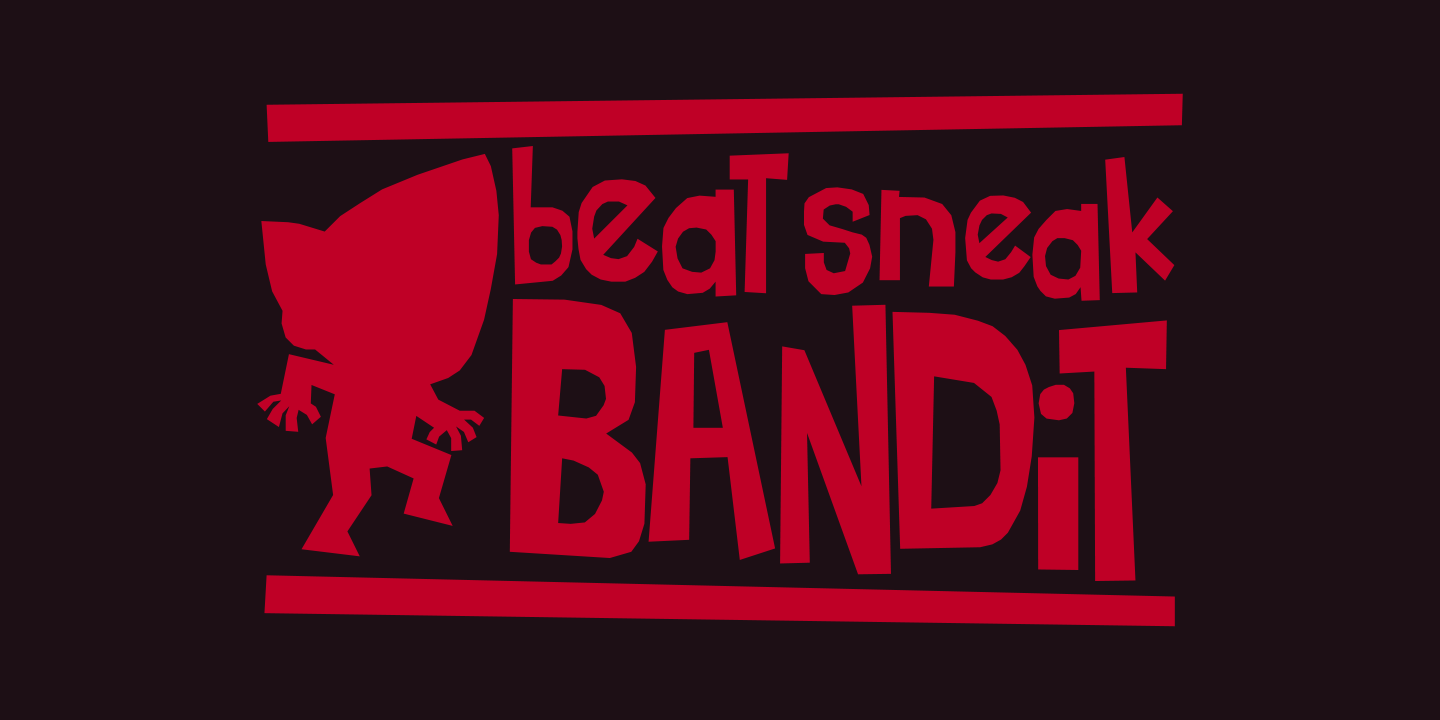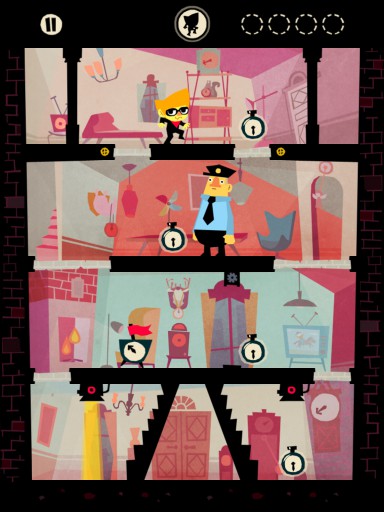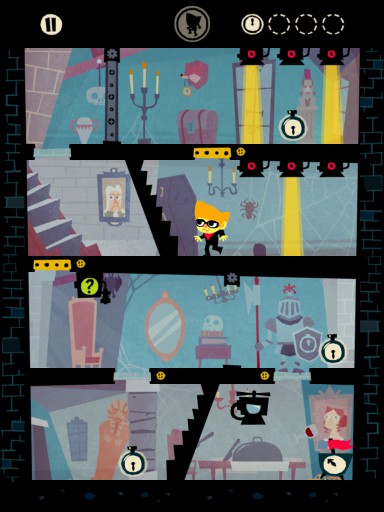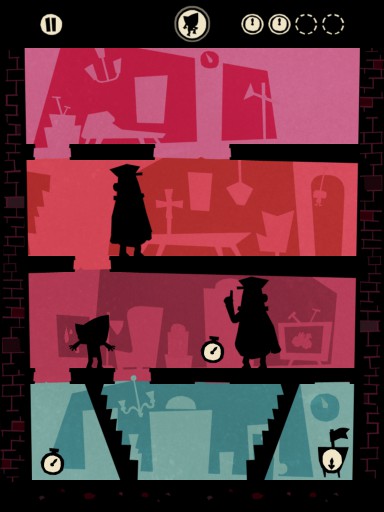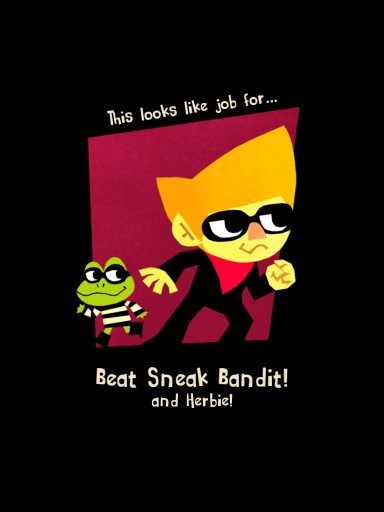
Beat Sneak Bandit

Title:
Beat Sneak Bandit

Genre:
Rhythm Puzzle

Release date:
Feb 16, 2012
RHYTHM. STEALTH. PUZZLE.
When all the clocks in the world are stolen by Duke Clockface and the world is in chaos, it’ll be up to the Beat Sneak Bandit to steal them back!
Rhythmadelic controls: Everything in this game moves rhythmically, just like the simple controls: Tap to the beat to sneak!
Stealthalicious gameplay: Sneak past patrolling guards, security lights, trapdoors and all the other freaky stuff and contraptions the creepy Duke’s got in store for you!
Puzzletastic levels: Watch, listen and learn the rhythm patterns to figure out how to solve all of the sneaky puzzles!

Gameplay & Development
Beat Sneak Bandit is a puzzle game with rhythm elements, in which players move the titular Beat Sneak Bandit one step at a time, by tapping to the beat. The goal is to get to a big clock in each stage, without getting caught by different rhythmic elements on each stage.
But, the first iterations of Beat Sneak Bandit differed a lot from the final game. Each floor with their rhythmic elements was treated like a separate looping timeline, which could be adjusted, to create offsets between the floors, and a safe path for the bandit. It was a much slower-paced game, in which players held down a finger on each floor to stop time, and then swiped the floors left or right to change the timing. You would then tap the bandit, who would sneak away through the levels automatically, like in Lemmings
For a long time, we experimented with two prototypes: one where players tapped on beat to move right and used the backbeat

Every action being stepped was not only influenced by the core idea of rhythm, but also by LCD games like Game & Watch





There were a lot of technical hurdles to overcome, as the game needed to constantly be in sync with the beat. We solved this by having the actual sound files driving the internal game time, and have all game elements adjust to this “clock”. We created an in-game level editor which was partly a traditional level editor in which obstacles and elements were placed, but also a beat editor for each individual object, which dictated how every element would behave to the beat. This approach led to a lot of interesting bugs: If the sound was not playing, then the entire game would stop. This bug gave us the idea to include a time-stopper object, which is introduced in the later levels.
After we had finished Beat Sneak Bandit we heard from Nintendo, who had noticed and liked the game, and wanted to see if we had any interest in making games for their platforms. Excited by the prospect of developing a game for a Nintendo platform, we decided to make a prototype for a 3DS game called Rollovski, set in the same universe.

Images
The departure from collages and material textures which had begun with Bumpy Road, culminated with Beat Sneak Bandit. In Bumpy Road, the influence from 1950s cartoons could already be felt, but the style became even more apparent in proportions, color choices and the more angular look. Cartoon Modern: Style and Design In Fifties Animation



To promote the game, we created two different wallpapers. One inspired by 1960s movie posters, and one more simplistic, which we imagined would look more like an album cover.

Videos
Beat Sneak Bandit had a much heavier focus on animation than our previous games, in which animations had been mostly a few sprites, and programmed motion. By studying closely how animation was handled in the Rhythm Tengoku games, we realised that actions for the bandit needed to happen instantly. Animation needed to instead happen after, rather than before, the action had been made. So, when bandit moves one step, he moves in one frame, and his motions are instead suggested with the animation principle “follow-through”.
Technically, animations are a mix between traditional 2D animations using sprites, and 3D animation. The 2D sprites are projected to 3D planes, animated in Maya, to further exaggerate motions to give a stronger sense of feedback for players, using squash and stretch. Each level background is filled with lots of animation following the beat, to give players even more feel for the rhythm. Every animation is, like the gameplay, driven by the sound file for the current level.

Music
Beat Sneak Bandit’s soundtrack
It was created with Madtracker 2, but unlike Bumpy Road and Kosmo Spin, the music for Beat Sneak Bandit didn’t use any recorded instruments, and instead relied on cut-up samples from old sample CDs for its horns, and used a lot of software synthesizers, inspired by Herbie Hancock
Funk, hip hop and fusion jazz served as the main inspiration for the music. These genres also inspired the lingo used in the game. We looked at the type of language used in song titles by artists like Funkadelic



The noisy and up-beat credits song is the only track that deviates from the tempo used by the rest of the songs. Jonathan Eng provided guitars and co-wrote the track.
Beat Sneak Bandit Credits

Game Credits
Art, design, sound & music
Simon Flesser
Programming & design
Magnus “Gordon” Gardebäck
Credits song
Jonathan Eng
Simon Flesser

Reviews, Press & Awards
Reviews
Metacritic
Edge 9/10
IGN
TouchArcade
Pocketgamer
Appsy
Videogamer.com
Gamezebo
Press
Pocket Gamer Slave to the rhythm: The making of Beat Sneak Bandit
Awards
Best Mobile Game at Independent Games Festival 2012 (Winner)
Best Audio Design at Edge Awards 2012 (Winner)
Best Gameplay at Unity Awards 2012 (Winner)
Best Mobile Action at Jayisgames.com Best of 2012 Awards (Winner)
Best Mobile Puzzle Games at IGN’s Best of 2012 Awards (Winner)
Audio Achievement at BAFTA Games Awards 2013 (Nominated)
Excellence in Innovation at International Mobile Gaming Awards 2013 (Nominated)
Excellence in Gameplay at International Mobile Gaming Awards 2013 (Nominated)
Best Mobile at Golden Joystick Awards 2012 (Nominated)
Indiecade 2012 (Finalist)
App Store iPad Game of the Week

